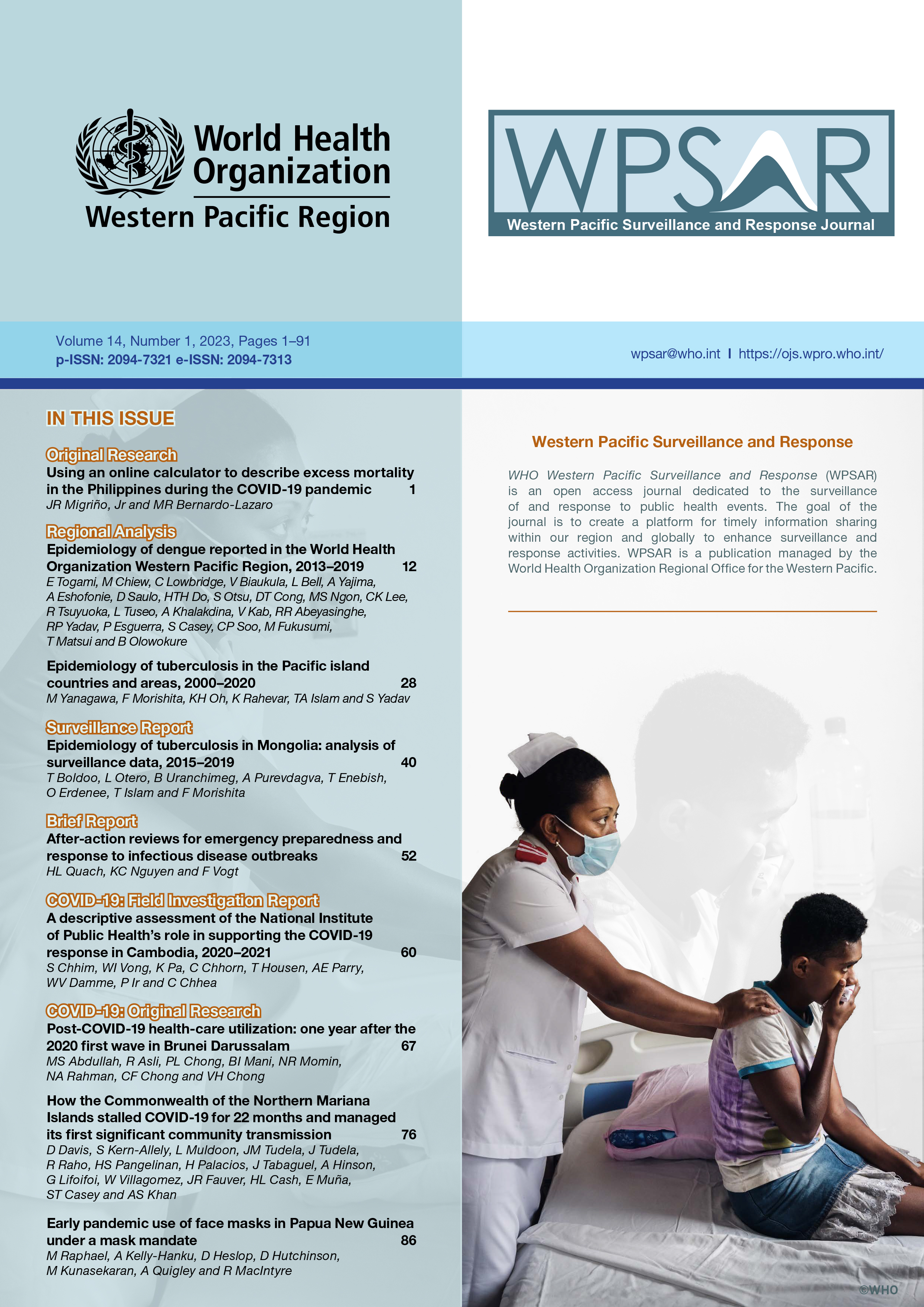How the Commonwealth of the Northern Mariana Islands stalled COVID-19 for 22 months and managed its first significant community transmission
DOI:
https://doi.org/10.5365/wpsar.2023.14.1.965Keywords:
COVID-19, Northern Mariana Islands, vaccination, epidemiology, emergency preparedness, risk factors, resource-limited settingsAbstract
Objective: The Commonwealth of the Northern Mariana Islands (CNMI) is a remote Pacific island territory with a population of 47 329 that successfully prevented the significant introduction of coronavirus disease (COVID-19) until late 2021. This study documents how the response to the introduction of COVID-19 in CNMI in 2021 was conducted with limited resources without overwhelming local clinical capacity or compromising health service delivery for the population.
Methods: Data from COVID-19 case investigations, contact tracing, the Commonwealth’s immunization registry and whole genome sequencing were collated and analysed as part of this study.
Results: Between 26 March 2020 and 31 December 2021, 3281 cases and 14 deaths due to COVID-19 were reported in CNMI (case fatality rate, 0.4%). While notification rates were highest among younger age groups, hospitalization and mortality rates were disproportionately greater among those aged >50 years and among the unvaccinated. The first widespread community transmission in CNMI was detected in October 2021, with genomic epidemiology and contact tracing data indicating a single introduction event involving the AY.25 lineage and subsequent rapid community spread. Vaccination coverage was high before widespread transmission occurred in October 2021 and increased further over the study period.
Discussion: Robust preparedness and strong leadership generated resilience within the public health sector such that COVID-19 did not overwhelm CNMI’s health system as it did in other jurisdictions and countries around the world. At no point was hospital capacity exceeded, and all patients received adequate care without the need for health-care rationing.

